Six Things Hyrule Warriors Says for Zelda Wii U
Posted on September 22 2014 by Dathen Boccabella
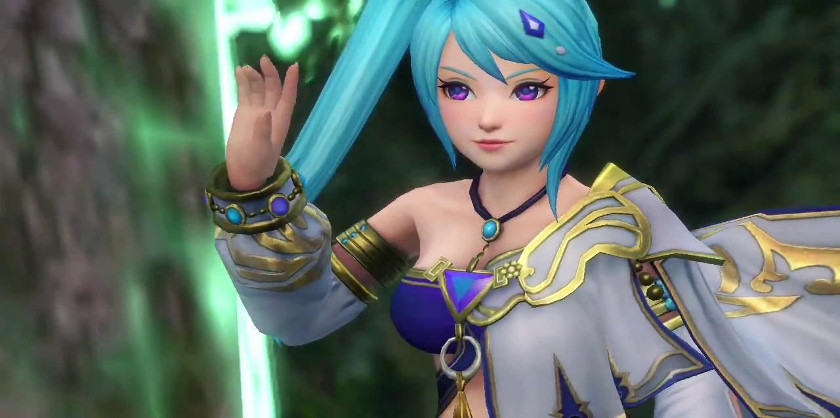
Hyrule Warriors is by no means a Legend of Zelda game and in no way did it ever try to be, that’s for sure. Bringing the classic tactical gameplay of Dynasty Warriors with a Zelda theme, Hyrule Warriors provides something new and fresh, but not something that encapsulates the Zelda essence of adventure and exploration.
Although Hyrule Warriors cannot (and never intended to) act as a bridge tiding gamers over to Zelda Wii U, it does have a few things to say about the upcoming full-blown Zelda adventure and the direction it may take. Six things in fact.
(PLEASE NOTE: There are minor story spoilers about Hyrule Warriors contained within if you read the full points. If you just browse the six main point headlines you will be fine.)
1- The Time has Come for Voice Acting
Hyrule Warriors has a beautiful narration of its backstory and to set-the-scene for each battle. I say beautiful, even though its pretty standard, because hearing words such as “Triforce“, “Ganondorf“, and “Gerudo” verbally narrated in a video game is long overdue.
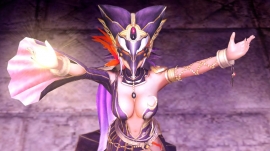 To go from that narration to silent dialogue is nothing short of a bring-down. There is Zelda and Impa in the opening scene, in their full HD Wii U glory, and then text boxes without prompts for proceeding flash along the bottom of the screen before you’ve wholly remembered that nobody talks in Zelda.
To go from that narration to silent dialogue is nothing short of a bring-down. There is Zelda and Impa in the opening scene, in their full HD Wii U glory, and then text boxes without prompts for proceeding flash along the bottom of the screen before you’ve wholly remembered that nobody talks in Zelda.
Aonuma wants Zelda Wii U to find the core essence of the franchise; the conventions of the series. Mute characters is neither, it’s a stubbornly continued tradition that adds no intrinsic value. Sure, in the Nintendo 64 era and beforehand pretty much everyone was mute other than Conker, but today, like HD, voice acting is standard, and for good reason.
Nintendo is welcome to keep Link as a silent avatar for the player if they must, but everyone else should be free to chat.
2- There Should be Playable Characters Other Than Link
There is something odd in Hyrule Warriors’ way of having Ganondorf as a playable character. You spend the game as Link, Zelda, Lana, and friends, then for several chapters you become Ganondorf and mess up their plans, before reverting back to the status quo in the finale where you take him down.
That aside, the option to play not only as Link (although he is enforced at times), but also as Princess Zelda, Sheik, Impa, Lana, Midna, Agitha, Darunia and Ruto, broadens the gameplay perspective.
On one level, involving multiple playable characters is to let go of Link as an avatar—something Nintendo is hesitant to openly commit to, despite it gradually happening over time as console capabilities have advanced and Link has become independently emotional and expressive.
But then again, the Zelda franchise has had plenty of other playable characters in the past that haven’t ruined everything.
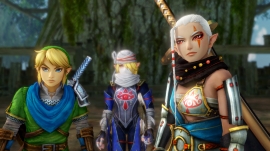 In Spirit Tracks we controlled Zelda as a phantom within the temples. In The Wind Waker we used the command melody to play as Makar and Medli. We even flew around as seagulls. Back in Majora’s Mask we played as Kafei, demonstrating how desperately he needed to get back the Sun’s Mask with his own hands, something playing only as Link didn’t fully convey.
In Spirit Tracks we controlled Zelda as a phantom within the temples. In The Wind Waker we used the command melody to play as Makar and Medli. We even flew around as seagulls. Back in Majora’s Mask we played as Kafei, demonstrating how desperately he needed to get back the Sun’s Mask with his own hands, something playing only as Link didn’t fully convey.
A variety of playable characters makes an experience more diverse. The Goron Darmani, the Zora Mikau, and the unnamed Deku of Majora’s Mask are, in ways, other playable characters masquerading as Link through a technicality, and look at the gameplay diversity they provided.
To not be Link all of the time would not be the disaster many will have you think it is. Indeed, how excitedly fans clung to the false-notion that Link was female in Zelda Wii U shows the desire for variety in their protagonist’s profile.
3- High-Definition Leaves Us in Awe
This goes without saying, but finally seeing a franchise you’ve followed for almost thirty years now in high-definition is like seeing your child grow into adult maturity. Hyrule Warriors opens with the HD Zelda and Impa watching Link in the training grounds. It’s simple, but it’s a special moment in HD.
To see a whole Legend of Zelda game crafted in HD is big. It didn’t take long for the online Zelda community to re-texturize Skyward Sword in high-definition, and that too was stellar to see. With a whole expansive Skyrim-like world slated for Zelda Wii U, our playtime is likely to once again tick by as we just admire the scenery.
4- Stories Must Have Substance
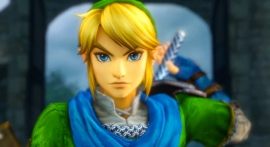 Subtext and emotional inspiration in the narrative of The Legend of Zelda series is as much a part of the series to many as the gameplay. Stories are only what you take away from them. What you remember. So, too, is The Legend of Zelda.
Subtext and emotional inspiration in the narrative of The Legend of Zelda series is as much a part of the series to many as the gameplay. Stories are only what you take away from them. What you remember. So, too, is The Legend of Zelda.
Zelda fans continue to harp on about the message of Majora’s Mask, the philosophy of the Wind Waker, or the overarching series themes of clinging to immortal childhoods while being destined to fade, or our human need for companionship.
Hyrule Warriors has a simple and succinct story, but it is interlaced with thematic substance. There is Link needing to accept the aid of friendship’s bonds to overcome his dark-side, Dark Link.
Even more touching is the contrast between Cia’s corruption over lust for another who is already taken, compared to Lana’s profound assertion that sometimes we just have to live accepting that we don’t always get to be with the one we think we deserve.
These simple moments of moral richness remind us of the depth fans expect from the characters and their struggles in Zelda Wii U.
5- Big-Scale Battles Need to be Implemented with Caution
Some people have desired Zelda to include a large-scale battle ever since we got a taste fighting King Bulblin and his minions on horseback in Twilight Princess. Others want such things kept far away from their Zelda, saying that’s what Hyrule Warriors is for, but Hyrule Warriors is more like reaching Ghirahim at the Sealed Grounds in Skyward Sword: it’s all just a tad too much.
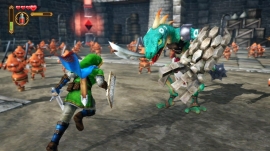 For a large-scale skirmish to happen in Zelda, it would be naturally very different to anything in Hyrule Warriors. Hyrule Warriors stays true to Dynasty Warriors gameplay, just with Zelda characters. That means its combat moves are over-the-top, the endless waves of enemies are excessive, and their mindlessness leaves much to be desired.
For a large-scale skirmish to happen in Zelda, it would be naturally very different to anything in Hyrule Warriors. Hyrule Warriors stays true to Dynasty Warriors gameplay, just with Zelda characters. That means its combat moves are over-the-top, the endless waves of enemies are excessive, and their mindlessness leaves much to be desired.
If a war was to feature in a Zelda game it would be much more tame and realistic. The focus would not be on the numbers, taking keeps, and advancing forces; it would be on the struggles Link (or the playable character) faces in their portion of the larger skirmish.
Hyrule Warriors does not scratch the itch of Zelda fans who have wanted large-scale (think Lord of the Rings film trilogy) combat in their Zelda games, but it does give a guide for how a core Zelda-franchise title could implement it, by largely showing how it shouldn’t be done.
6- Role-Playing Game (RPG) Elements are Most Welcome
RPG elements should be thought of as more customizable inventories. There’s much more to RPGs than just leveling up your party, and many of these aspects would work well in Zelda.
Skyward Sword briefly introduced role-playing elements into the Legend of Zelda series (that is forgetting Zelda II is pretty much an RPG) through the Bazaar, where shields and items could be upgraded with collected items and custom potions could be infused.
Hyrule Warriors has plenty of RPG aspects to it as well. Putting levels aside, as they are irrelevant, the weapon and ability customization is applicable. Zelda has had blacksmiths from A Link to the Past to Majora’s Mask, with sword upgrades all along the way. To be able to customize and upgrade your inventory more so than in Skyward Sword is welcome.
To then give your weapons a new ability, or your defense a boost, with badges like in Hyrule Warriors would be an appreciated furthering of the Zelda franchise. Instead of having to hunt Heart Pieces to survive a boss fight, we could instead purchase or customize stronger armor. We could even alchemize a solution that strengthens our life-meter without the need for a Great Fairy upgrade.
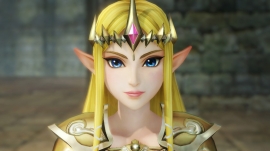 Even Link could be customizable within certain parameters, as many RPGs favor nowadays. Especially seen as Nintendo fancies him as our avatar.
Even Link could be customizable within certain parameters, as many RPGs favor nowadays. Especially seen as Nintendo fancies him as our avatar.
I’ll leave you with a quote from Zelda Wii U producer Eiji Aonuma, discussing Hyrule Warriors and how it influenced his approach to developing Zelda for Wii U.
“You have this map and there are battle areas all across this expansive battlefield. Things are happening, regardless of whether or not you’re in this particular space. How you approach reclaiming these different areas on the map really changes how you progress through the game. So it’s really, really dynamic, it’s really, really expansive. It also increases replay value because if you change your strategy, your process will also change. Having worked on a game that has this kind of expansive battlefield style has really opened my eyes to new discoveries, and my thought and approach to gameplay has really deepened. I see many, many possibilities now that I’ve worked on this project with Tecmo Koei.” — Eiji Aonuma
Does that mean some large-scale battles, some more playable characters, or some more RPG elements? We’ll find out soon enough. In the meantime, give Hyrule Warriors a whirl yourself.



